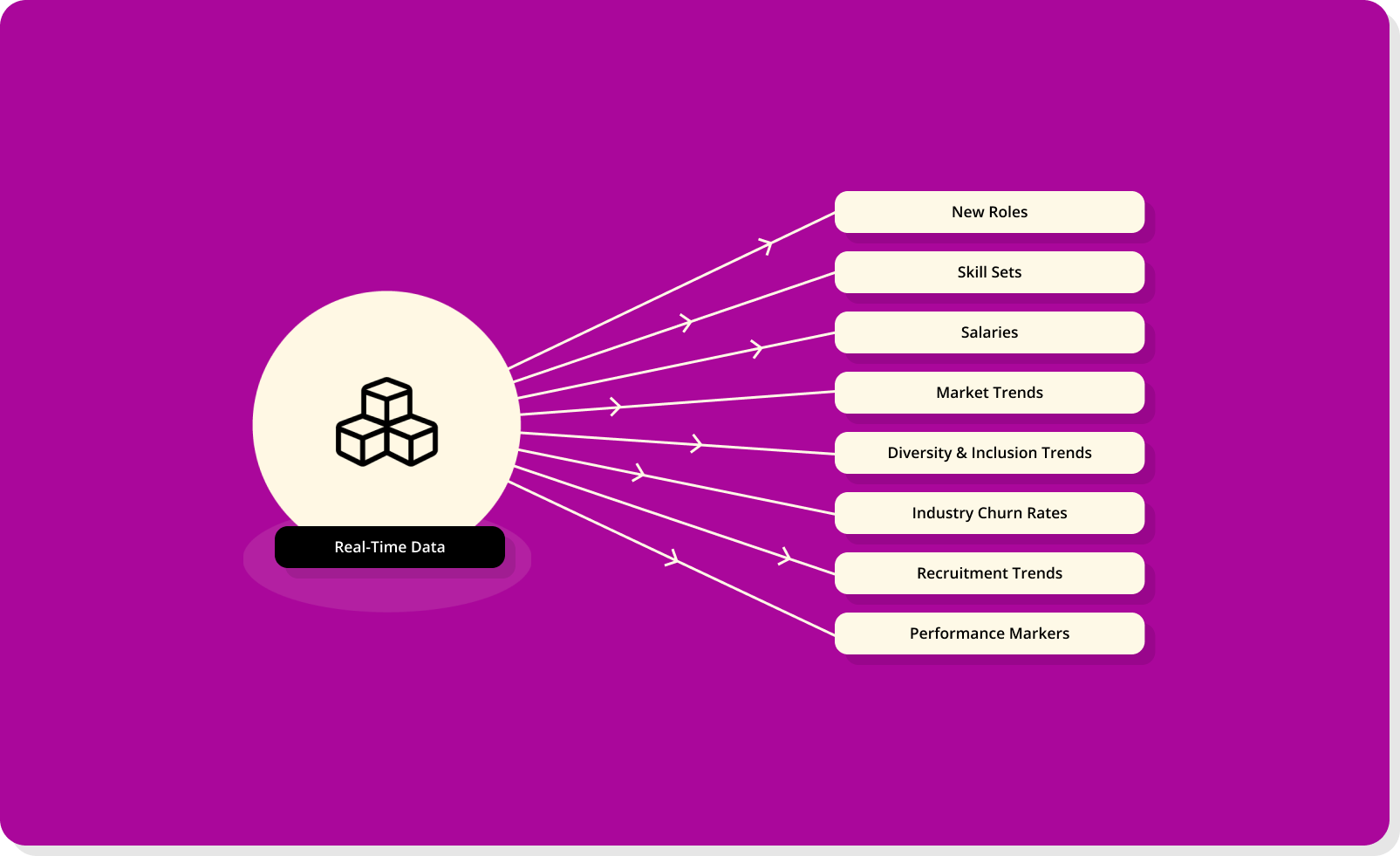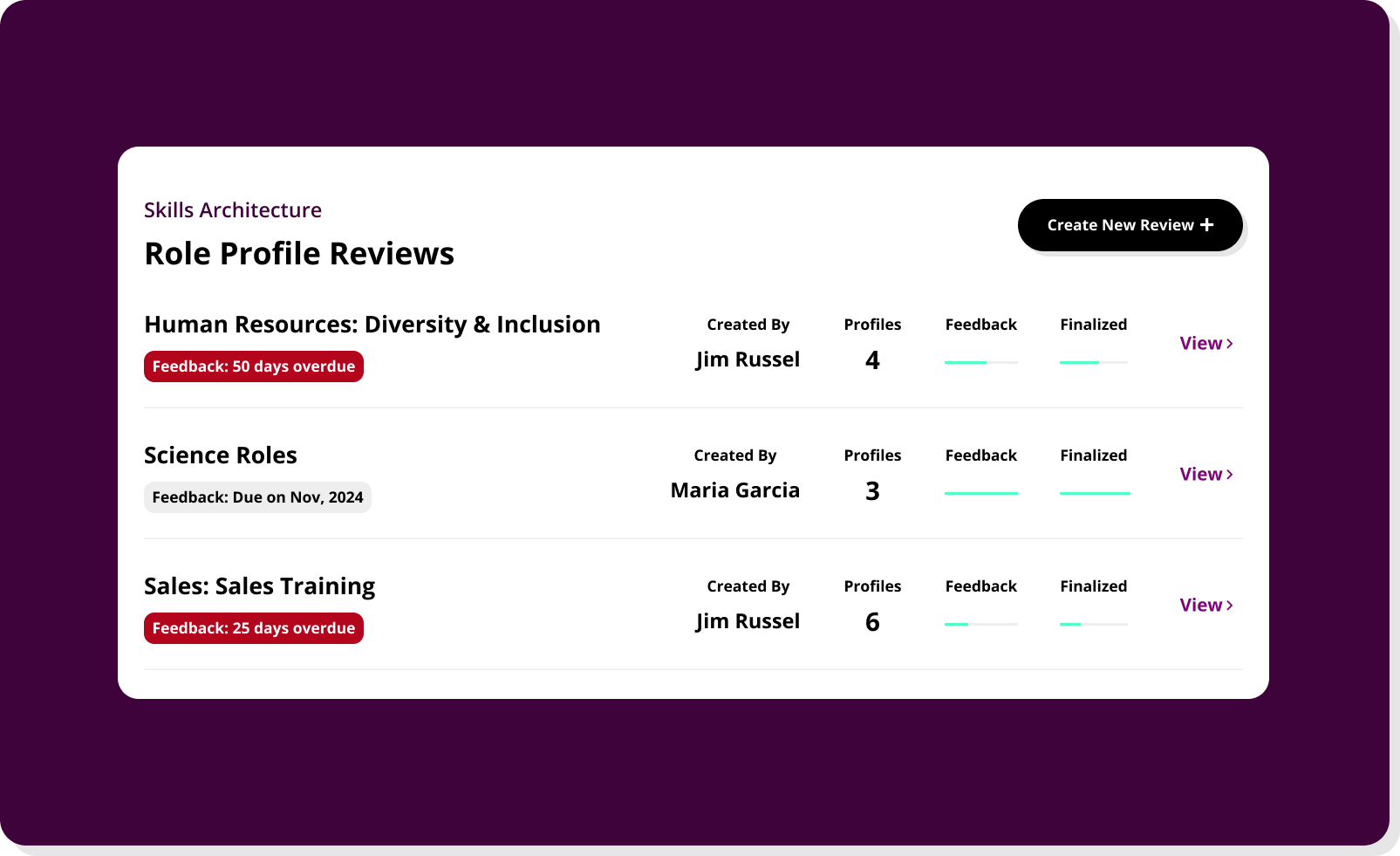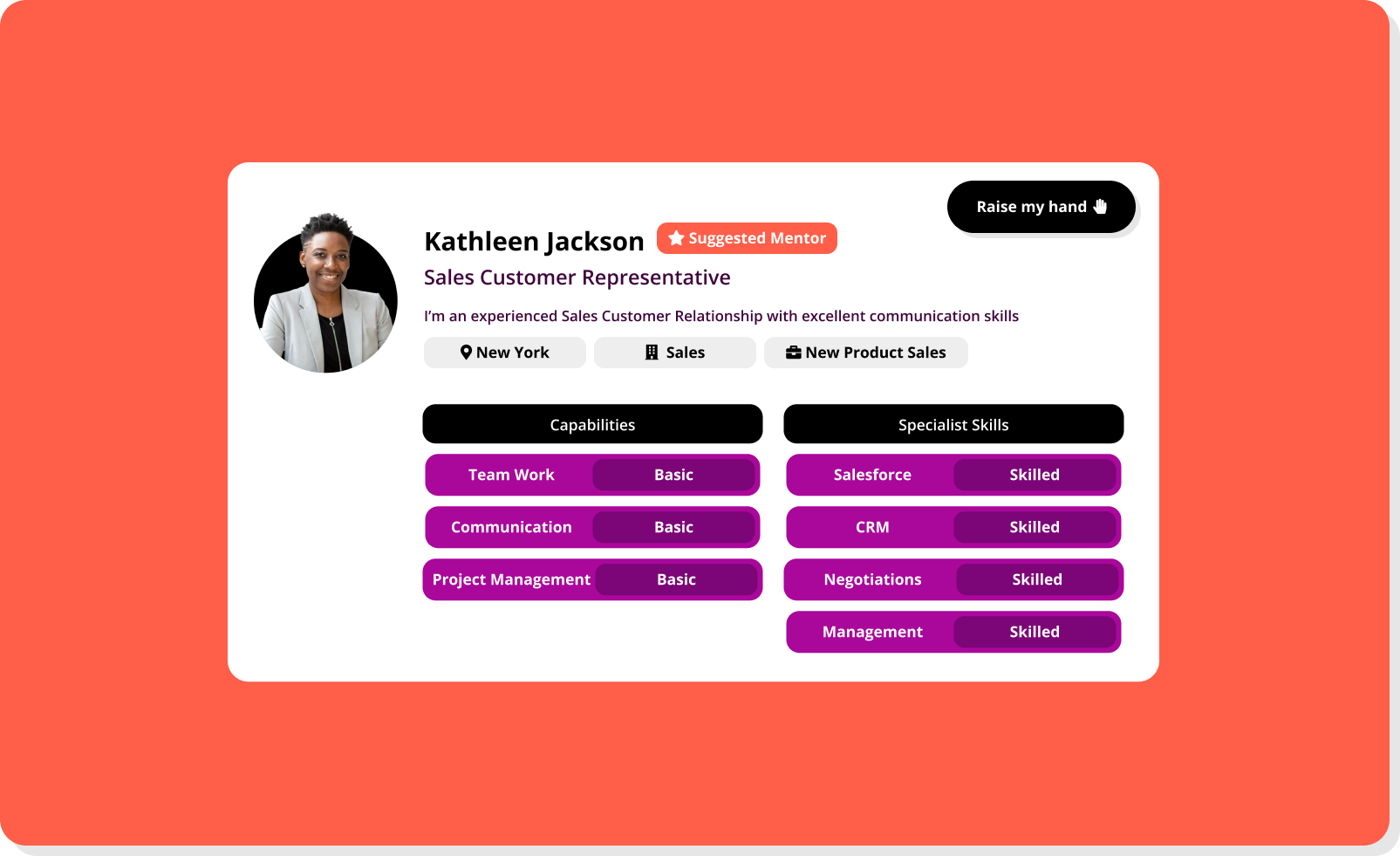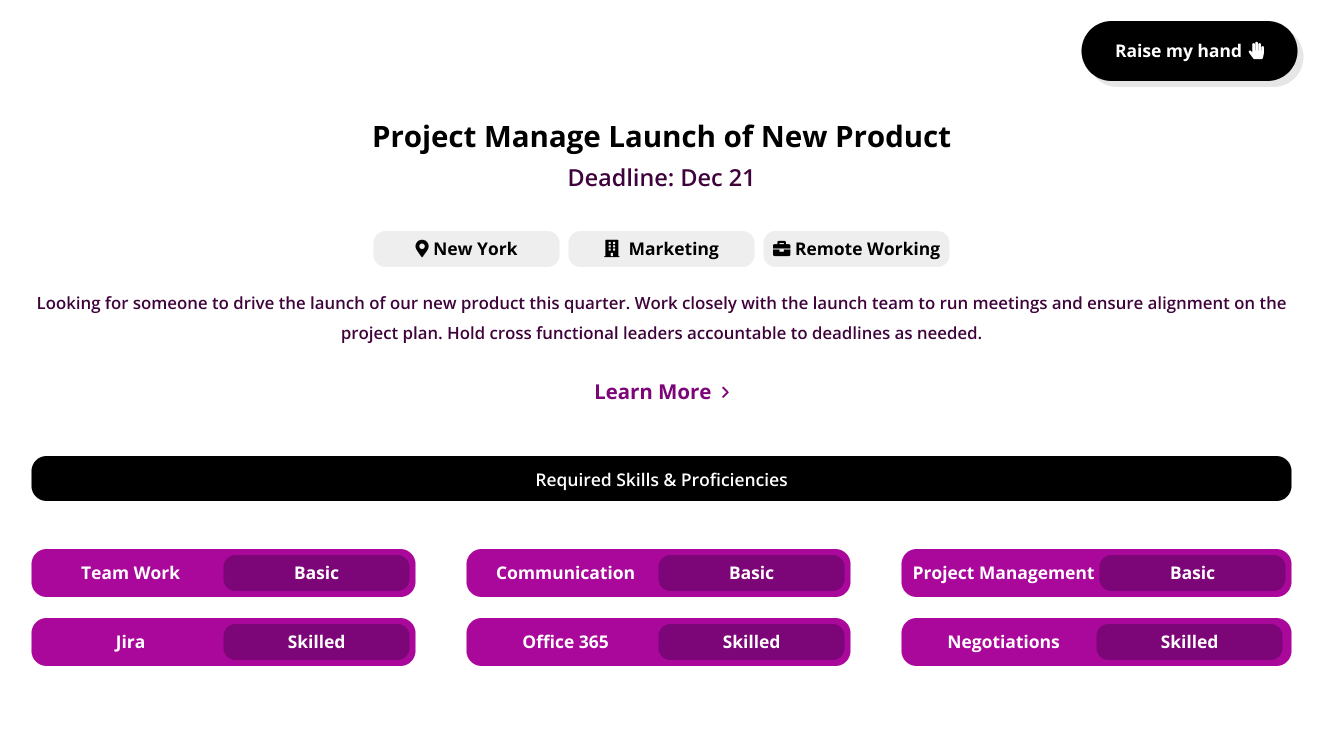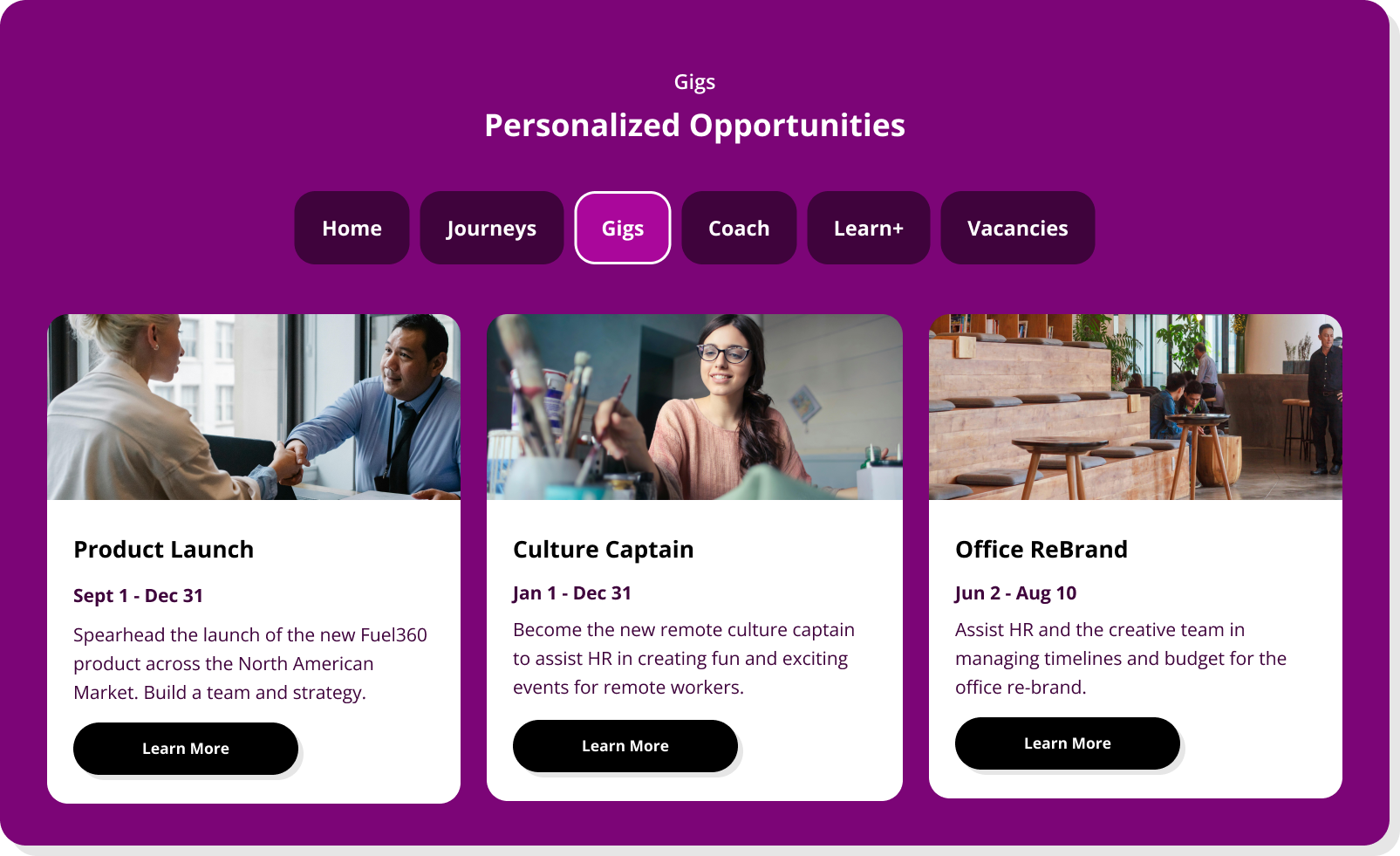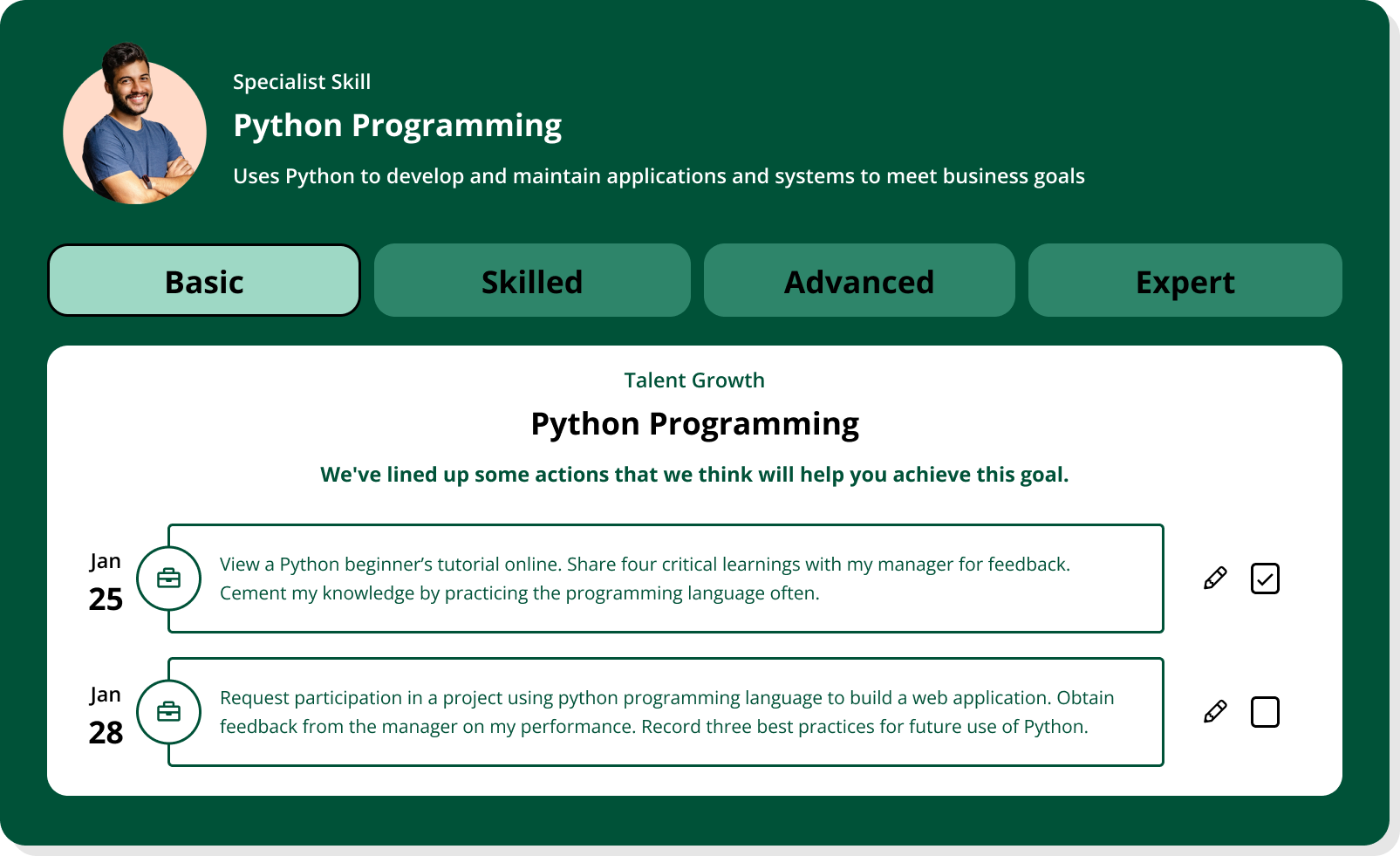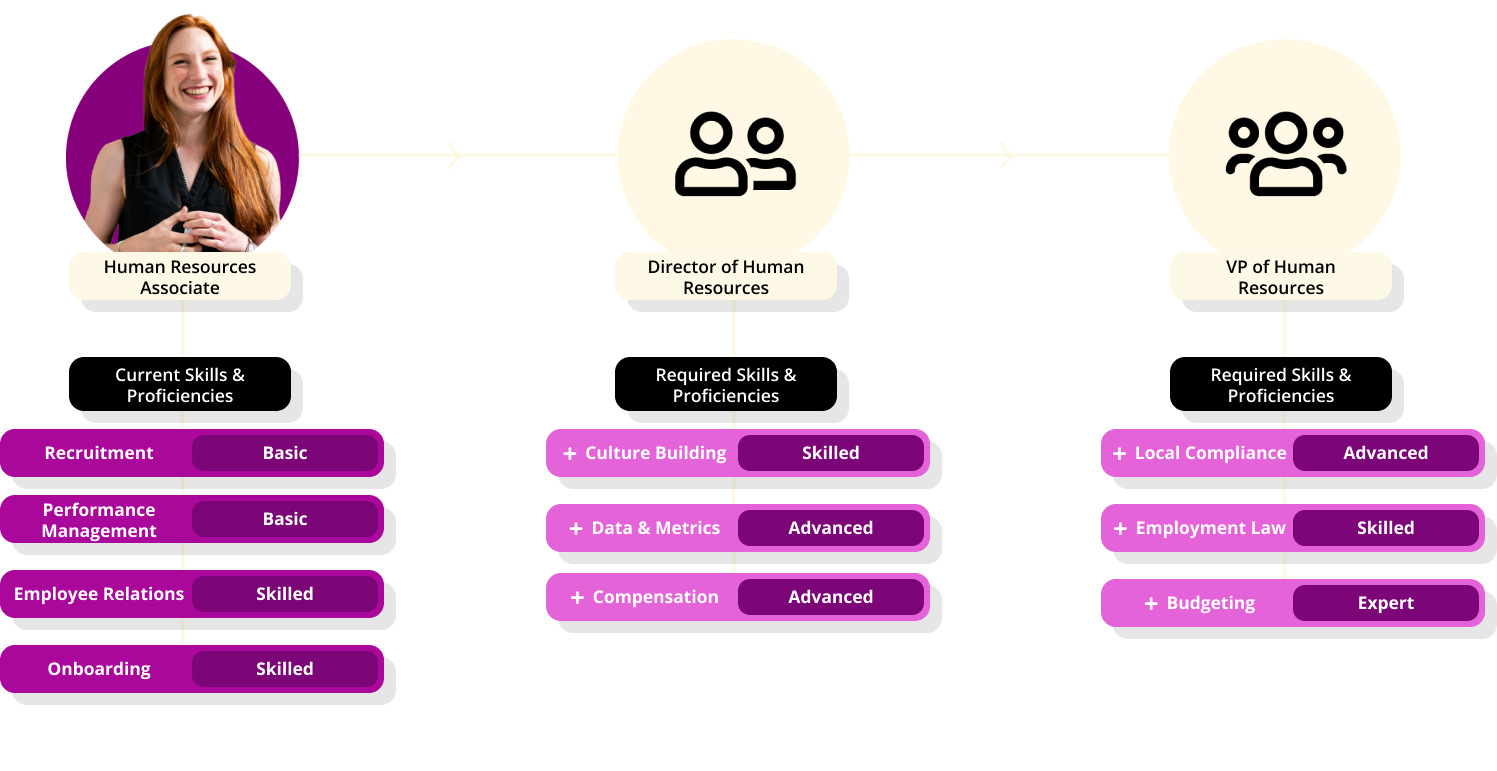When it comes to promotions, coaching, feedback, or stretch opportunities, most decisions are driven by gut feeling—who seems ready, who they get along with, who speaks up often.
These patterns feel intuitive, but they’re often loaded with unconscious bias. And over time, that bias shapes outcomes: some people are noticed while others aren’t. Some receive development plans, yet others are left to figure things out on their own.
This isn’t because managers are careless, but because they’re making judgment calls without the structure or data to do it any other way.
Fuel50 remedies that issue by giving managers objective insights into skills, motivations, proficiency levels, and growth goals so they can make informed decisions about their people.
In this piece, we’ll break down the common biases that show up in everyday leadership and show how Fuel50 equips managers to lead more fairly, consistently, and effectively.
The top four hidden biases in people leadership
Managers rarely set out to play favorites. But without clear, structured data to guide decisions, they tend to fall back on what feels familiar, even with the best intentions.
Similarity bias: “I get along with this person, so they must be a high performer.”
When a manager sees themselves in an employee—such as the same sense of humor, communication style, or background—there’s an instinctive sense of trust. That often then translates into access to feedback, stretch roles, and growth.
The problem is that access isn’t usually earned through a clear-eyed comparison of capability. It’s given because the relationship feels easy; meetings are smoother, and the other person “just gets it.”
Meanwhile, others who might be just as skilled (or even more so) are left out of the loop. They aren’t given the benefit of the doubt nor invited to join conversations. It’s not because they’re underperforming; it’s due to the fact they don’t match the manager’s mental template of what “great” looks like.
This kind of bias compounds over time. High-potential employees go unnoticed, team diversity flatlines, and the same voices dominate, while others quietly disengage.
Visibility bias: “They’re the most vocal, so they must be the most capable.”
In every team, there are people who naturally take up space. They speak confidently, share updates often, and make sure their work is seen. That visibility creates a perception of competence—and managers, under pressure to move quickly, often lean into that facade.
But not everyone self-promotes. Some employees quietly deliver results, solve problems, and support teammates behind the scenes. Their contributions are real but easy to miss if you’re not actively looking.
Thus, visibility and capability are confused. When managers conflate them, they build feedback loops where only the loudest are noticed, and only the noticed get opportunities.
Over time, this creates resentment within the team. High performers see that showing up isn’t enough, while others learn that the path to recognition is performance theater. Either way, the organization loses.
Recency bias: “They messed up last week, so they’re not ready.”
Managers are human. When something goes wrong (e.g., a missed deadline, a clumsy client call, an off comment in a meeting), it sticks in people’s minds.
Even if it’s an outlier, or the employee has a solid track record, that one moment colors the manager’s memory and becomes a disproportionately weighted signal of readiness.
As a result, feedback becomes reactive instead of developmental. Opportunities are quietly pulled back, and the employee—who might not even know what went wrong—is left to guess what changed.
This is how trust erodes, through subtle shifts in tone, body language, and belief. Without a structured way to calibrate performance over time, managers can’t easily see when their perception is skewed.
Intuition-as-evidence bias: “I just have a feeling.”
This is the quiet engine behind all the others. When a manager can’t clearly explain why they trust one person more than another, or why someone isn’t ready for the next step, that decision is guided by instinct, which makes it unreliable.
These gut decisions often masquerade as decisiveness, but they’re unaccountable, untraceable, and often wrong.
In a system without data, instinct fills the gap. But instinct can’t be audited or scaled, nor can it support a diverse, high-performing team where everyone has a fair shot at growth.
The cost extends beyond a few missed promotions. It becomes a leadership culture that relies on memory, mood, and momentum, rather than skill, potential, and progress.
How Fuel50 turns biased authority into skills-based leadership
Fuel50 is a talent intelligence engine built to give managers the one thing they struggle with: real, structured insight into what their people can do and where they can go.
Where bias thrives on gut instinct, Fuel50 operates on verified skills data, career signals, and organizational context. It transforms how managers lead by giving them the tools to make every decision—about development, feedback, or opportunity—based on capability, not chemistry.
Here’s how it works in practice.
Personalize leadership with skills-backed profiles and org-aligned context
Most biases begin with familiarity; managers tend to trust and promote people they feel comfortable with. Fuel50 disrupts that dynamic by giving managers a living, evolving profile of each employee grounded in verified skills, not surface-level rapport.
The platform’s Career DNA not only captures a static resume snapshot but also reflects an individual’s current capabilities, evolving interests, and future aspirations, gathered continuously through user input and interaction. This means managers don’t have to rely on memory or personal impressions; they see the whole person through validated data.
More importantly, DNA Imprint™ enables each organization to embed its cultural values, strategic objectives, and role-level success profiles into the system. So, when a manager reviews an employee profile, they can see what that person is good at, as well as how that capability fits into the business’s bigger picture.
It reframes the leadership question from, “Who do I trust?” to, “Who aligns with what we’re trying to achieve and has the skills to back it up?”
Elevate hidden talent with skills intelligence and talent marketplace signals
The biggest issue with visibility bias is that it rewards performance marketing over actual performance. Fuel50 counters this with a dynamic talent marketplace that highlights internal candidates based on merit, not volume.
Through every interaction—whether it’s exploring career paths, submitting skill self-assessments, participating in a mentoring program, or applying for a gig—Fuel50 collects intent signals. These feed into a system that continuously refreshes internal talent pools and recommends candidates based on true role-fit potential.
That means when a manager posts a gig or opens a new role, they’re matched with people they’ve never managed, maybe never even spoken to, but who meet the position’s criteria based on skills, growth trajectory, and career goals.
It creates a recruiting mechanism within the business that’s deeper and fairer than “who’s in the room.”
Turn feedback into development with precision skills architecture
Recency bias thrives in environments where feedback is ad hoc and expectations are unspoken. Fuel50 solves this with a deeply structured skill ontology of over 5,000 skills mapped with clear definitions, behavioral examples, and proficiency levels.
Rather than vague comments like, “That client call didn’t go well,” managers can now point to a specific skill (e.g., active listening), discuss what proficiency looks like, and co-create a plan to improve it. Each skill has suggested developmental actions, such as training, mentoring, or gigs, that tie the feedback loop to a concrete growth opportunity.
That shifts the power dynamic from a subjective call on readiness to a shared, skills-based roadmap.
Make leadership decisions with data, not vibes
When dealing with an employee, managers tend to default to what feels familiar. Fuel50 changes this by providing a single source of truth across skills, aspirations, learning activity, role readiness, and performance signals—all visible in one place.
The platform’s Leader View centralizes these insights, enabling side-by-side comparisons, uncovering bias triggers (like role homogeneity), and giving managers the confidence to justify their choices through hard evidence.
This shifts leadership’s reliance on intuition to applied data. Managers no longer have to feel their way through decisions; they’ll make calls they can defend, improve, and scale.
The bottom line
Organizations don’t intentionally design leadership to be biased, but if managers make decisions without credible data, it’s inevitable. Instinct, impressions, and convenience are easy ways to fill the gaps left by missing insights.
Thankfully, Fuel50 closes those gaps. It gives managers access to hard signals (i.e.,skills, aspirations, performance indicators, development progress) so they no longer guess who’s ready, who’s struggling, or who needs what to grow, supporting the development of future-ready workforces.
When managers have a clear line of sight into their people, they make better decisions, have more meaningful conversations, and build trust that scales.
The most noteworthy change? It becomes normal, not exceptional, for decisions to be based on substance.
If you want fair leadership to be more than a talking point, Fuel50 is how you implement it.



